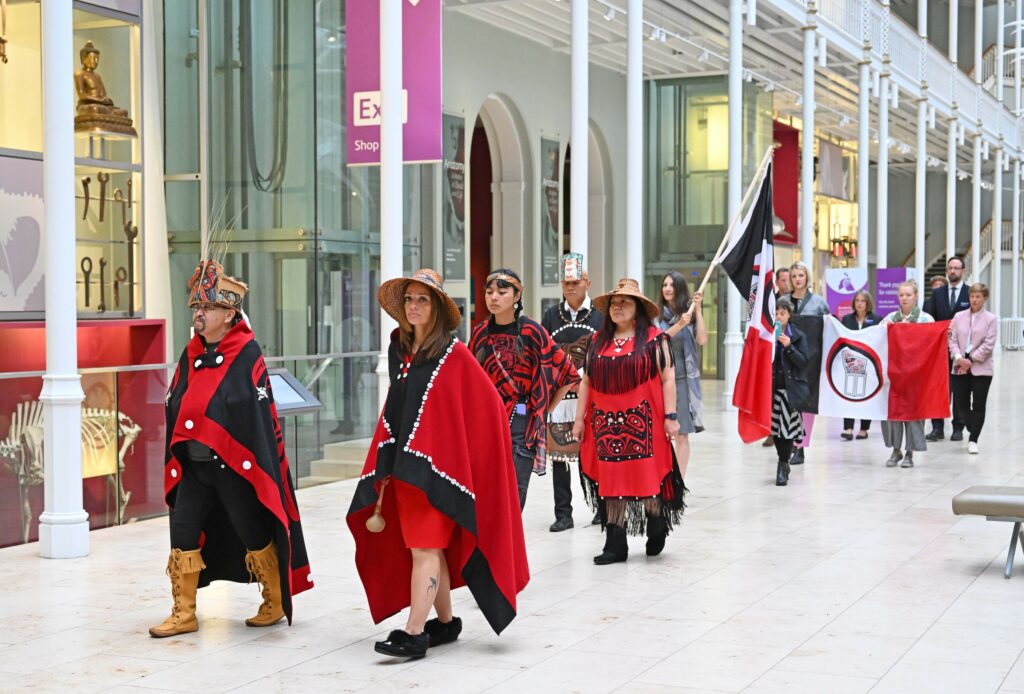It wasn’t the first and wouldn’t be the last sacred object to be taken from the Nisga’a. Like Indigenous peoples across Canada, the Nisga’a have endured the horrors of colonization for generations. Decimated by illness, they were stripped of their traditional lands and their culture was criminalized. Ceremonies such as the potlatch, during which totem poles were often raised, were outlawed. Totem poles — and other outward signs of Nisga’a spirituality, heritage and art that weren’t hidden — were destroyed or taken by traders and sold to collectors around the world.
The Ni’isjoohl Memorial Pole was carved by artist Oyay Tait and his assistant, Gwanes, in memory of Ts’awit, a warrior in line to be chief who was killed protecting his nation. Raised in 1860, the pole tells the story of Ts’awit’s ancestral wilp (family group or house) and details the wilp’s connection to the land and the Nisga’a people.
“It’s hard to put into words how many layers of meaning it has,” says Amy Parent, Canada Research Chair in Indigenous education and governance at Simon Fraser University and current holder of the female version of the name Ts’awit — her Nisga’a name is Sigidimnak’ Noxs Ts’aawit. She compares the pole to a family album combined with a page of the Canadian Constitution. “But when a pole is carved and the ceremonies are done, the pole itself gains a spirit.”
But for Barbeau, the Ni’isjoohl pole was just another acquisition.
Barbeau “had a catalogue,” Parent says. “He would take a photo of a pole. And then on the back, he’d write a price and then [with permission of the Canadian government] shop them to museums around the world,” says Parent. “He quoted $400 to $600 for our pole.”
In the Nisga’a territory, however, the pole was never forgotten.
“This was our living ancestor,” says Parent, “a living constitutional and visual archive.”
On May 11, 2000, the Nisga’a and the governments of Canada and British Columbia signed the Nisga’a Final Agreement, the first modern treaty in the province, which provides the Nisga’a People with ownership of 2,019 square kilometres of land and rights to an annual allocation of salmon and other traditional foods. The treaty was also the first to include a provision for the return of ancestral items housed in Canadian museums.









